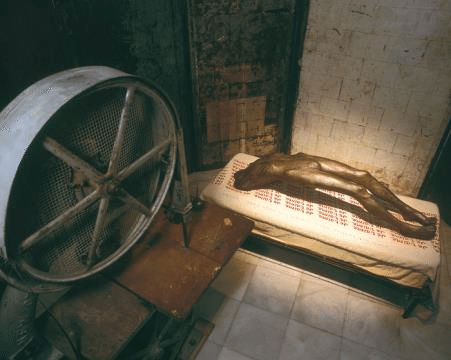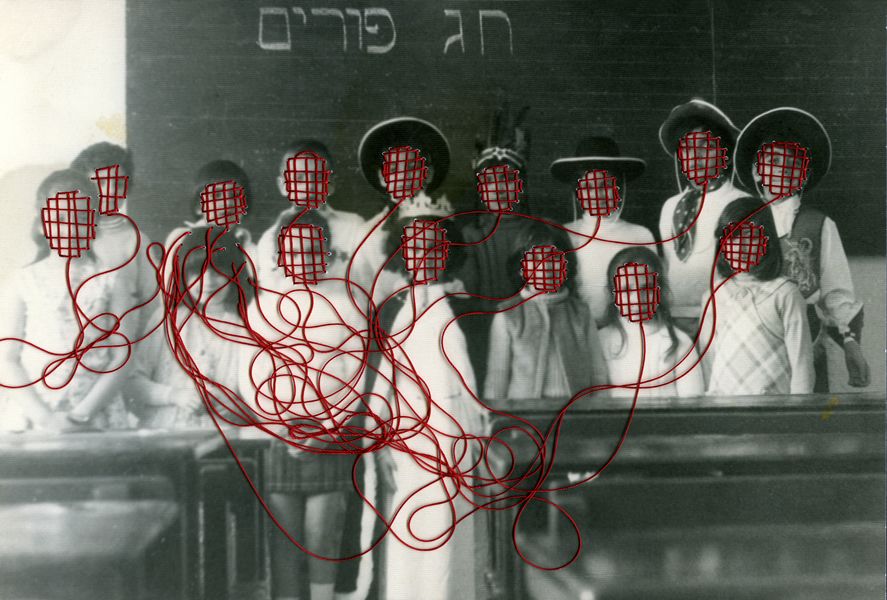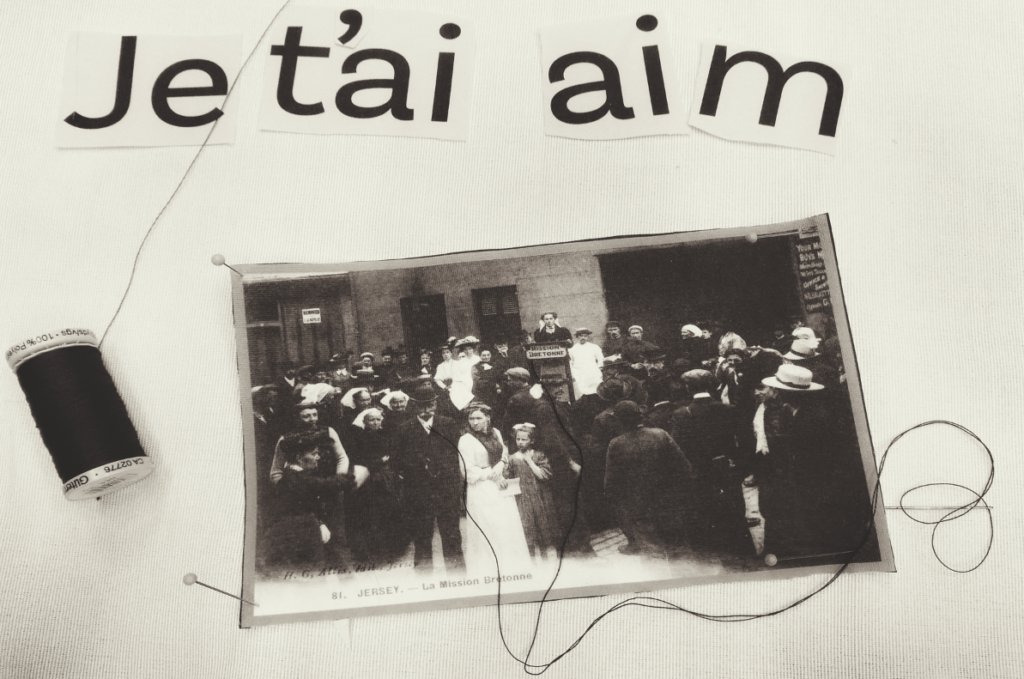Bayeux Tapestry
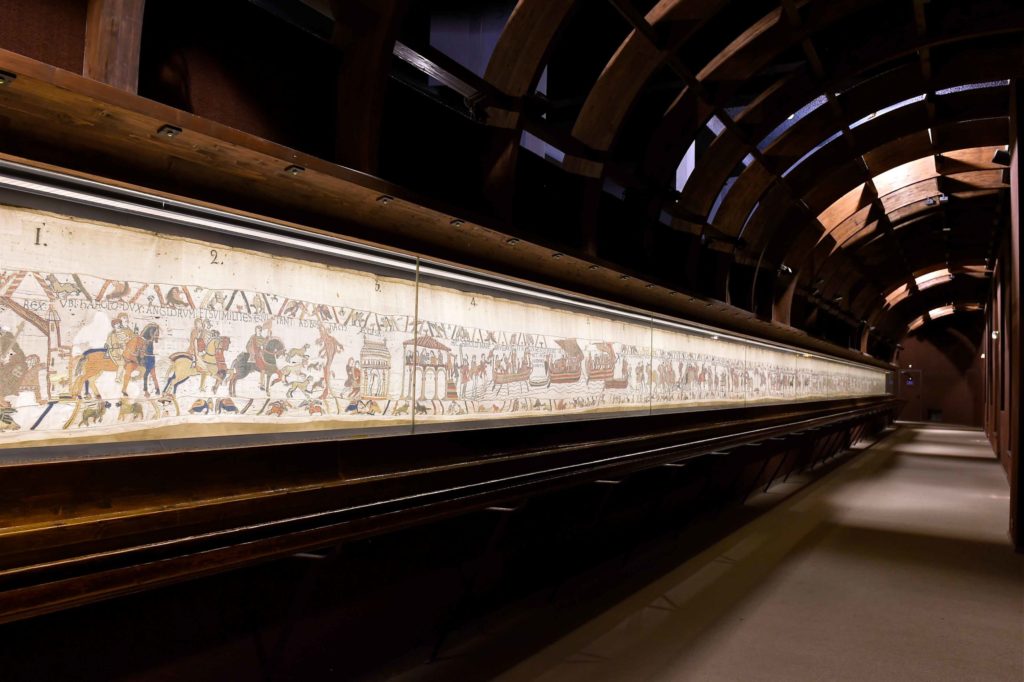
The Bayeux Tapestry is an embroidered cloth nearly 70 metres long and 50 centimetres tall that depicts the events leading up to the Norman conquest of England concerning William, Duke of Normandy, and Harold, Earl of Wessex, later King of England, and culminating in the Battle of Hastings.
It was commissioned to celebrate the ‘William the Conqueror’s’ conquest of England. It begins with the events that led up to it – the death of Edward the confessor the King of England, and the succession of a new king; Harold. It runs through each scene of the Normans invasion and ends in the killing of King Harold.

The Bayeux tapestry is one of the supreme achievements of the Norman Romanesque. Romanesque art is the art of Europe from approximately 1000 AD to the rise of the Gothic style in the 12th century.
https://www.britannica.com/art/Romanesque-art
The Channel Islands became part of the Anglo-Norman realm when William the Conqueror defeated King Harold and won the English crown at the Battle of Hastings in 1066. Jerseymen, or at least close relatives, serving under their Normandy lords, were said to be present at this historical battle. Just who was and was not at Hastings has been the subject of argument for centuries, but Onfroi, Mauger and Roger de Carteret, the sons of Godefroi de Carteret, are believed to have fought in the battle. It is likely that Onfroi’s son Renaud was the first de Carteret to become established in Jersey, and was thus the founder of the dynasty which ruled Jersey for such long periods over the centuries.
The tapestry is actually not a “true” tapestry in which the design is woven into the cloth in tapestry weave; it is technically an embroidery. It was embroidered on tabby-woven linen in crewel. It uses two main types of stiches: backstitching for the lettering and outlines and coaching for filling in the figures. Nine linen panels were sewn together to make the full 70m piece.
At least two panels of the tapestry are missing, perhaps even another 6.4 m . This missing area may have included William’s coronation.

The tapestry is now exhibited at the Musée de la Tapisserie de Bayeux in Bayeux, Normandy, France. https://www.bayeuxmuseum.com/en/the-bayeux-tapestry/
Lisa Reihana
Lisa Reihana is a New Zealand artist of Maori descent.
is a moving image interpretation of the French scenic wallpaper Les Sauvages de la Mer Pacifique.
In Neoclassical France, entrepreneur Joseph Dufour used the latest printing innovations to produce Les Sauvages de la Mer Pacifique (1804), a sophisticated twenty panel scenic wallpaper. Mirroring a widespread fascination with the Pacific voyages undertaken by Captain Cook, de Bougainville and de la Perouse, the wallpaper’s exotic themes referenced popular illustrations of that time. Two hundred years later, Maori artist Lisa Reihana employs twenty-first century digital technologies to animate Les Sauvages de la Mer Pacifique. Enlivened with the sights and sounds of dance and cultural ceremonies, a vast video panorama is populated by a myriad of people drawn from across New Zealand and the Pacific.
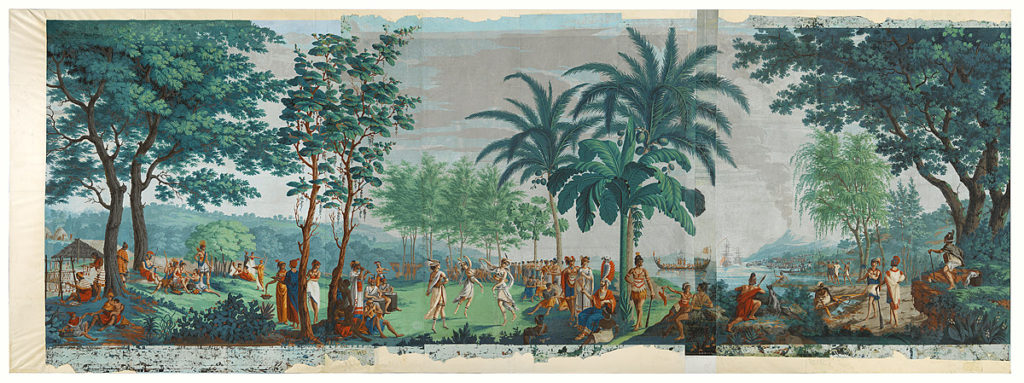
Separated by two centuries, both the wallpaper and video are set against an utopian Tahitian landscape. While Dufour’s work models Enlightenment beliefs and ideas of harmony amongst mankind, Reihana’s reading of the past is darker and more nuanced. The artist foregrounds the complexities of cultural identity and colonisation by including scenes of encounter between Europeans and Polynesians.
in Pursuit of Venus is a major video project that has been in development for several years. It reflects the wallpapers utopian ideals, is eight minutes long and presented on two-screens. in Pursuit of Venus has been exhibited in historic homes, art galleries and museums – repurposing each presentation offers new insights and unique presentation opportunities.
This epic piece of living, moving, animated wallpaper eventually led to her representing New Zealand at last year’s Venice Biennale, where it was described as the best exhibit by critics including those from the Spectator and the Sunday Times.
Read article HERE in the Guardian and watch Lisa discuss the making of her film.
Embroidery
I learnt a lot from my experience with embroidery. Initially some inspiration based stimulus, to gain inspiration into a more tangible world of art, was given to us. I studied the work of El Anatsui who is a Ghanaian sculptor who’s work focuses on reusing materials in an in orthodox way to give it new meaning. Such as this piece below where he uses bottle caps to create a piece that looks flexible and embodies themes of consumption, transformation and the environment.

We then learnt about the different types of stiches we could attempt to use in our work.

I made use of the back and the satin stich the most. The back stitch is a good method to create a continuous line. It involves, as the name suggests, stitching cloth in a line and then stitching back onto that line to make it more continuous. Satin stitching is an effective way of filling/colouring in a section of your work and it involves a consistent long portion of string being stitched parallel to fill in a space. Below is an example of where I used these methods in the same piece of tapestry.

My embroidery experience involved a lot of experimenting and compiling of many different elements.
Because there was free reign of creativity I almost allowed my hand to guide the string where I wanted it to go to create visual elements that popped into my head. I decided to create a piece with a central focus with other elements and materials sewed to it.
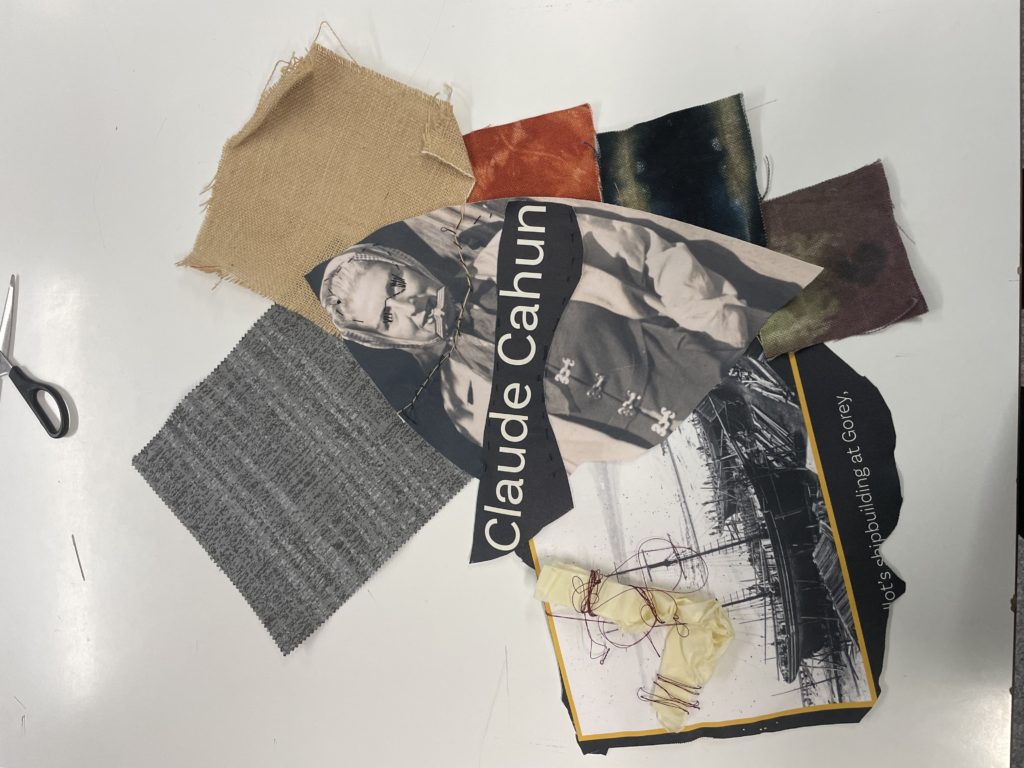
My focal image was that of influential figure in the occupation and art scene of Jersey, Claude Cahun. I additionally decided to use various stitching methods to create an intriguing design around her face to mask her eyes representing the oppression she faced during the occupation.
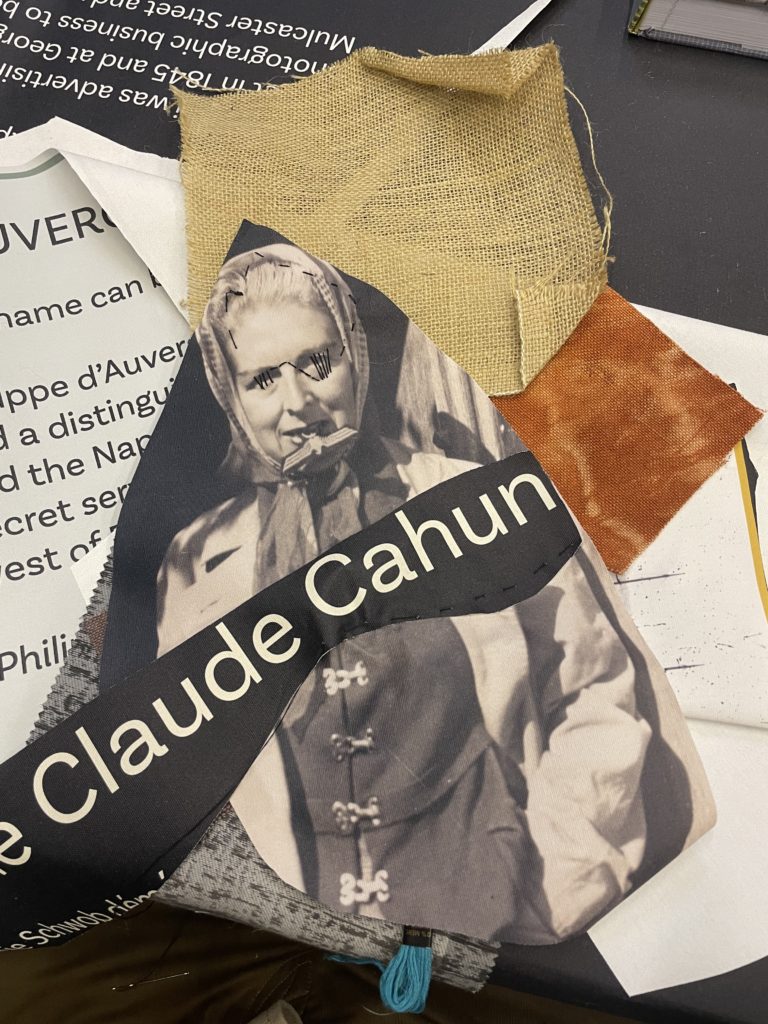
To further showcase my workflow around my embroidery I created a GIF by taking continuous photos of my piece every few minutes. I created it in photoshop by following these steps:
1. Create layer for each image
2. Window > timeline
3. Select > Create Frame Animation
4. Drop Menu > Make frames from Layers
5. Timeline > select Forever
6. File > Export > Save for Web Legacy > reduce image size to 720 x 720 pixels

I believe making this gif inspired thoughts of how tangible art can be infused with digital art. I believe using inspiration from the work of Lisa Reihana this GIF can be developed into a more in depth digital movie with the addition of a narrative. The GIF could be improved by taking images more frequently to create a smoother animation and keeping the embroidery in the same location of the table – not move it around as much.















